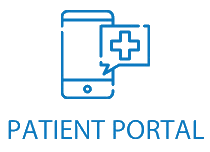How Tuberculosis Spreads: Symptoms, Causes, and Treatment

Key Points
- TB spreads through the air via droplets released when an infected person coughs, sneezes or sings
- People who live in crowded conditions and those with weakened immune systems are more vulnerable to TB infection.
Are you having trouble breathing or experiencing a fever? You might be worried that you have the Flu or COVID-19. However, these symptoms aren’t only caused by the novel virus. Tuberculosis, like COVID-19, also targets the lungs and can cause similar symptoms.
Tuberculosis (TB) is a serious illness that mostly harms the lungs. It is caused by certain bacteria.
Is tuberculosis airborne or droplet?
According to the American Lung Association, the bacteria spreads through the air from person to person and mainly targets the lungs, but it can also affect other parts of the body.
Tuberculosis can spread when a person with the illness coughs, sneezes, or sings, releasing tiny droplets containing the germs into the air. Another person can inhale these droplets, allowing the germs to enter their lungs.
Tuberculosis spreads easily in crowded places or living conditions. People with HIV/AIDS or other weakened immune systems are at a higher risk of catching tuberculosis compared to those with healthy immune systems.
Signs and Symptoms of Tuberculosis
A TB infection doesn’t always lead to illness. The disease has several stages and forms:
Primary TB
This is the initial stage of a tuberculosis infection. Your immune system might be able to fight off the germs, but sometimes, it doesn’t eliminate all of them, allowing the germs to keep multiplying. According to the Centers for Disease Control and Prevention (CDC), most primary TB infections often show no symptoms and are followed by a latent TB infection.
Symptoms of Primary TB may include:
- mild or progressively worsening dry cough
- low-grade fever, fatigue
- weight loss
- night sweats.
Latent TB
The bacteria are present in your body and can be detected through tests, but they are not active. During this stage, you do not have any symptoms and cannot transmit the disease to others, as mentioned by MedlinePlus. However, the infection is still alive and could potentially become active in the future. If your doctor thinks you’re more likely to have this happen, they might prescribe medication to keep those germs inactive for good. This is more common if you have certain conditions like HIV, a recent TB infection, an unusual chest X-ray, or a weakened immune system.
Active TB
Active tuberculosis (TB) develops when the immune system cannot manage an infection. The TB bacteria are active and multiplying, making you feel unwell and contagious to others. To prevent serious problems and protect those around you, getting medical attention right away is crucial.
Symptoms of Active TB usually start slowly and progress over a few weeks:
- Cough.
- Coughing up blood or mucus.
- Chest pain.
- Pain with breathing or coughing.
- Fever.
- Chills.
- Night sweats.
- Weight loss.
- Not wanting to eat.
- Tiredness.
- Not feeling well in general.
Active TB disease outside the lungs
Extrapulmonary tuberculosis is when a TB infection spreads from the lungs to other parts of the body. The symptoms you experience will vary depending on the specific location of the infection.
Related: Bronchitis: Causes, Symptoms, and Treatment Options
How is Tuberculosis Treated?
Treatment for tuberculosis depends on the type of the disease. If you have latent tuberculosis, you might only need one or two medications. For active tuberculosis, doctors usually recommend a combination of antibiotics for at least six months. The specific medicines and how long you’ll need to take them will be decided based on your age, medical history, overall health, and where the tuberculosis is in your body.
Common medications used for tuberculosis treatment include:
- Isoniazid
- Rifampin (Rifandin, Rimactane)
- Ethambutol (Myambutol)
- Pyrazinamide
Tuberculosis Medication Side Effects
Like other medications, tuberculosis drugs can cause side effects.
Isoniazid may include:
- Feeling numb or having a tingling sensation in your hands and feet
- Upset stomach, nausea, and vomiting
- Loss of appetite
- Weakness
Ethambutol may include:
- Chills
- Painful or swollen joints
- Abdominal pain, nausea, and vomiting
- Loss of appetite
- Headache
- Confusion
- Eye problems such as pain and vision issues
Pyrazinamide may include:
- Fatigue
- Nausea and vomiting
- Loss of appetite
- Muscle or joint pain
Rifampin may include:
- Skin rash
- Upset stomach
- Nausea, and vomiting
- Brown urine
- Yellowing of the skin or eyes (jaundice)
- Diarrhea
- Loss of appetite
- Inflammation of the pancreas
How to Test for Tuberculosis?
If you suspect you’ve been in contact with someone who has tuberculosis or are experiencing symptoms, it’s essential to undergo testing promptly. At DOC-AID Urgent Care, our providers offer the TB test.
Common tests are:
Tuberculosis Skin Test
To do this test, your doctor will inject a liquid called tuberculin into your lower arm skin with a small needle. This will result in a tiny, pale bump. You’ll need to return in two or three days so your provider can assess the reaction on your arm. If you have a raised, firm bump or swelling, the test will be positive for tuberculosis. However, a positive result doesn’t always mean you have active tuberculosis. On the other hand, no skin reaction to the test means you don’t have tuberculosis.
Tuberculosis Blood Test
A blood test can help confirm infection for individuals who have received the tuberculosis vaccine or had a negative skin test. If the blood test shows a positive result, further tests will be conducted to determine whether the tuberculosis infection is active or latent.


